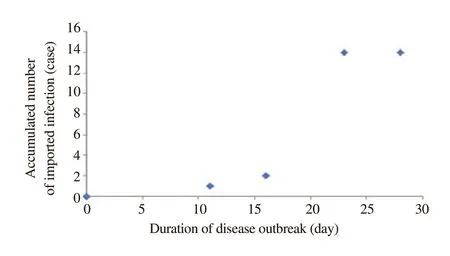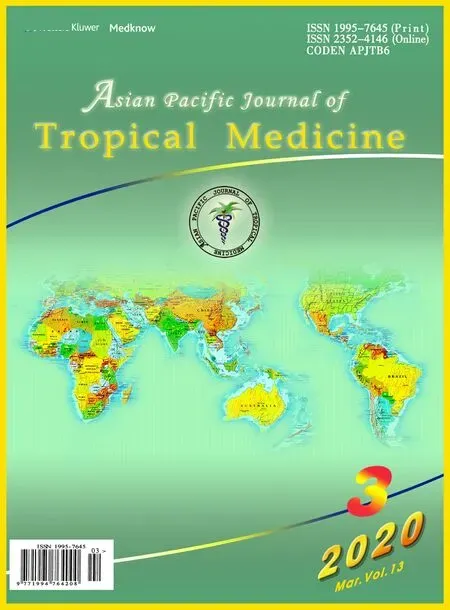Imported cases of 2019-novel coronavirus (2019-nCoV) infections in Thailand:Mathematical modelling of the outbreak
Pathum Sookaromdee, Viroj Wiwanitkit
1TWS Medical Center, Bangkok, Thailand
2Department of Community Medicine, Dr DY Patil University, Pune, India
3Hainan Medical University, Haikou, China
4Chulalongkorn University, Bangkok, Thailand
Outbreak of a new emerging disease is usually an important consideration in medicine and public health. In December 2019,a new emerging disease started in China and becomes the global concern in early January 2020[1,2]. The disease, 2019-novel coronavirus (2019-nCoV) infection, already existed outside China and the importation of disease is the cause of emerging 2019-nCoV infections in new settings. Thailand, a tropical country in Indochina,is the first country that reported the first 2019-nCoV infection outside China. Until the present (31 January 2020), the number of cases is 29 and still increasing.
An interesting issue in dealing with the new disease outbreak is nature of disease spreading. The use of medical mathematical modelling technique can help clinical epidemiologist better understand the situation of outbreak[3]. Focusing on the situation of imported emerging disease, the specific knowledge on the disease epidemic is limited. Here, the authors use clinical mathematical modelling technique for explaining the disease outbreak of imported cases of 2019-nCoV infection in Thailand. The available data on imported cases of outbreak during the first month of outbreak(January 2020) of imported cases in Thailand are analyzed. The time function mathematical model was applied.
First, the local data on number of imported cases of 2019-nCoV infections from Thai Center of Disease Control are collected for further study. The accelerate rate of disease spreading is calculated.The definition of accelerate rate is “accelerate rate = velocity/time”,which herby written as A = V/T (or V = AT). Then, the integration was applied for prediction of accumulate imported cases of 2019-nCoV infections (I). The final equation based on the integration model can be written as I = 2AT2+ AT + C where C is a constant.
Based on the available data (Figure 1), the acceleration rate of disease spreading is equal to 0.42 case/day[4]. From integration modelling, the final model is derived as “0.84T2+ 0.42T + C where C is constant.” This model can help better understand the nature of imported emerging disease and useful for planning for disease control and management.

Figure 1. Accumulated number of imported Wuhan novel coronavirus infection in Thailand and duration of disease outbreak.
Conflict of interest statement
We declare that we have no conflict of interest.
Authors' contributions
SP and WV conceived and drafted the manuscript. SP and WV were responsible for analyses and data interpretation.

Supplementary Table 1.Percentages of tropical acute febrile illnesses patients by clinical characteristics(n=336).

Table S1.Reported number of clinically diagnosed cholera cases to the Department of Health Services by districts,2016-2017.


 Asian Pacific Journal of Tropical Medicine2020年3期
Asian Pacific Journal of Tropical Medicine2020年3期
- Asian Pacific Journal of Tropical Medicine的其它文章
- Emerging and re-emerging human infectious diseases: A systematic review of the role of wild animals with a focus on public health impact
- Mapping the high burden areas of cholera in Nepal for potential use of oral cholera vaccine: An analysis of data from publications and routine surveillance systems
- Etiologies of tropical acute febrile illness in West Pahang, Malaysia: A prospective observational study
- Blastocystis incidence, spontaneous clearance, persistence and risk factors in a rural community in Thailand: A prospective cohort study
- Molecular isolation and identification of Mycobacterium avium subsp. hominissuis in Didelphis virginiana from Hidalgo, Mexico
